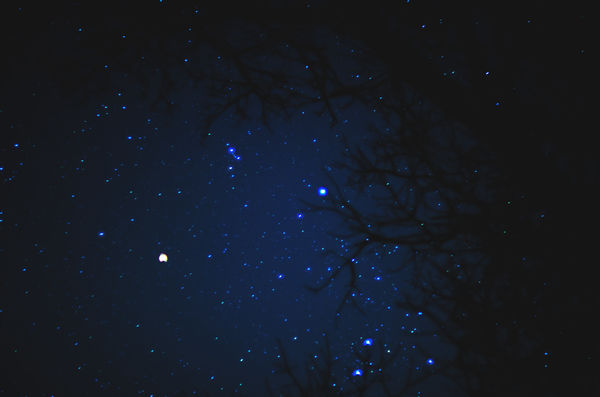500 Rule
Jan 21, 2017 13:08:18 #
Leitz
Loc: Solms
JoBarg wrote:
I recently read a blog of a 500 rule for nighttime photography.. The example was using a 14 mm lens full format camera. The calculation said 500 divided by 14 = the exposure time maximum before the "sky" moved.. Any info?
Lots of opinions here. Try here for facts:
http://www.uglyhedgehog.com/s-109-1.html
Jan 21, 2017 13:54:42 #
Jan 21, 2017 14:16:54 #
Rodledge
Loc: Alabama
DirtFarmer wrote:
Of course if you're shooting the pole star* it doesn't move much, but most people shoot in other directions. My 15 second example above was shot at about 45 degrees North latitude, but it's really the latitude (declination) of the star that counts, not the latitude of the camera.
* The "pole star" (Polaris, also known as the North Star) is not quite on the pole. It's approximately 0.7 degrees away from the pole. There is no comparable bright star at the southern pole.
* The "pole star" (Polaris, also known as the North Star) is not quite on the pole. It's approximately 0.7 degrees away from the pole. There is no comparable bright star at the southern pole.
I agree...most people don't realize that it is your latitude and where you point the camera in the sky that matters regarding the angular rate of the apparent star movement. Stars above the equator appear to move fastest while the north and South Pole areas appear considerably slower. So the exposure time can vary a lot when trying to minimize star trails. And again the other big factor is the lense FOV. Wide angle lenses take awhile to have the star move across their FOV while telephoto lenses see a smaller portion of the sky and experience shorter/quicker transversing times.... translated to mean your exposure time can be longer with wide angle lenses.
Jan 21, 2017 15:02:48 #
I agree. Canon has a factor of 1.6, so 500 divided by 18 mm divided again by 1.6 would be my max exposure time
Jan 21, 2017 16:45:39 #
rfmaude41
Loc: Lancaster, Texas (DFW area)
G Brown wrote:
that would be 28.5 of a second? That seems to be reasonable. On a crop sensor iso 100 at F10 gives a 30th of a second at 18mm. The sky won't move but focus and sharpness may be an issue.
try asking in the astro section
try asking in the astro section
BAD math 500/14 = 35+ seconds !!!!! Actually, your partially correct, the sky, for all practical purposes, does not move, BUT, the earth (and the camera, along with it) are going in a circular pattern in one direction (unless you do not believe in the earths polar rotation), and in addition, more movement as the earth rotates about the sun, and the sun around our galaxy .....
Jan 21, 2017 22:56:45 #
jeepdaddy: Thanks for the detailed tips on night photography. I haven't done much night photography so your advice will eliminate a lot of trial-and-error the next time I give it a try. john marks
Jan 22, 2017 01:41:03 #
jdmarks64 wrote:
jeepdaddy: Thanks for the detailed tips on night photography. I haven't done much night photography so your advice will eliminate a lot of trial-and-error the next time I give it a try. john marks



If you want to reply, then register here. Registration is free and your account is created instantly, so you can post right away.




